| |
PrEP Report: Sexual behavior patterns/PrEP dosing
and PrEP Report by Bob Grant: PrEP usage estimates/PrEP in SF
|
| |
| |
Download the PDF now
Download the PDF now
"Sexual Behavior Patterns and PrEP Dosing Preferences in a large sample of North American Men who have Sex with Men".
JAIDS Journal of Acquired Immune Deficiency Syndromes:
Post Acceptance: September 11, 2015
Stack, Conor; Oldenburg, Catie; Mimiaga, Matthew; Elsesser, Steven A.; Krakower, Douglas; Novak, David S.; Egan, Jamie; Stall, Ronald; Safren, Steve; Mayer, Kenneth H.
Abstract
Pre-exposure prophylaxis (PrEP), taken as a single daily co-formulated pill containing tenofovir-emtricitabine, is a promising intervention to reduce the likelihood of HIV acquisition in at-risk individuals, including men who have sex with men (MSM). Little is known about the acceptability of less than daily, intermittent PrEP (iPrEP) regimens. We conducted an online survey of North American MSM to characterize their sexual frequency and planning behaviors and correlate these with PrEP dosing preferences. Of the 3,217 respondents who completed the survey, 46% reported engaging in unplanned condomless anal intercourse (CAI) at least once in the prior 3 months and 8% reported engaging in CAI more than once per week. In multivariable analysis, reporting unplanned CAI was associated with lower educational level, identifying as homosexual/gay as compared to bisexual, being in a monogamous relationship, having a higher self-perceived risk of HIV acquisition, higher income, engaging in CAI more than five times in the last 3 months, and not having visited a healthcare provider in the previous year. Frequent CAI (>1x/week) was associated with being younger, identifying as homosexual/gay as compared to bisexual, being in a monogamous relationship, and having a higher self-perceived risk of HIV. Having had only planned sex over the last 3 months was associated with a preference for event-based PrEP, while having frequent or unplanned CAI was associated with a preference for daily or time-driven PrEP regimens, respectively. Our findings suggest that preferences for different PrEP regimens are associated with the sexual frequency and planning behaviors of potential users.
------------------------
at IAS Intermittent & Daily PrEP
IAS: HPTN 067/ADAPT Background and Methods and Cape Town Results: - (08/07/15)
IAS: A Comparison of Daily and Non-daily Pre-exposure Prophylaxis Dosing in Thai Men Who Have Sex With Men, Bangkok - HPTN 067 / ADAPT Study - (08/07/15)
IAS: Facilitators and barriers affecting PrEP adherence among Thai men who have sex with men in the HPTN 067/ADAPT study - (07/27/15)
IAS: Patterns of sex and PrEP in Bangkok MSM (HPTN 067/ADAPT Study) - (08/07/15)
IAS: Feasibility of Intermittent PrEP Among US MSM: Data from the Harlem Site - HPTN 067: ADAPT Study - (08/05/15)
-----------------------------
Presented at
IAPAC Controlling the HIV Epidemic with Antiretrovirals: Having the Courage of our Convictions will take place 1-2 October 2015 at the City Hall of the 4th Arrondissement of the City of Paris.
Bob Grant Presentation Below.......'Estimated # of PrEP Users in USAĠ >22,000.....
Early PrEP Implementation:
Perspectives from the Field
Moderator: Jane Anderson, MBBS, PhD
Panelists:
Robert M. Grant, MD, MPH ·
Presentation
(UK) Sheena McCormack, MSc ·
Presentation
(France) Jean-Michel Molina, MD ·
Presentation


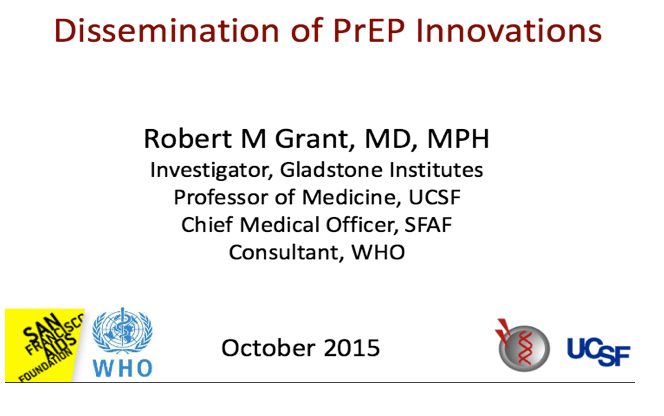
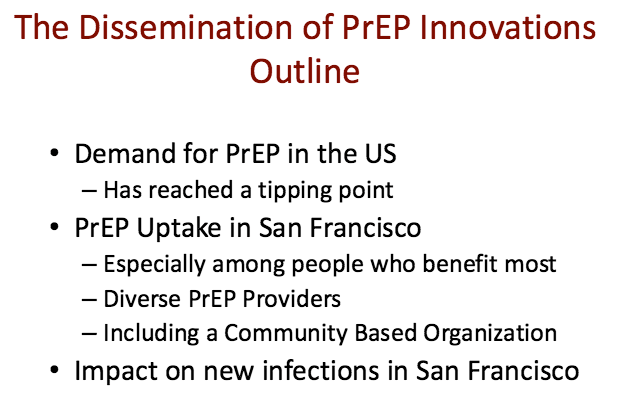
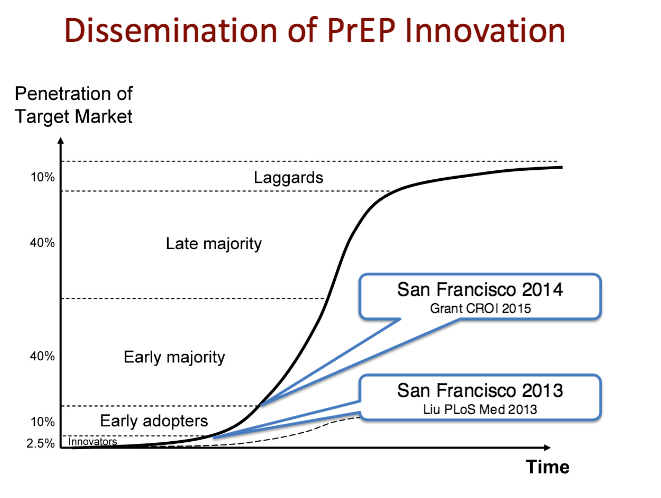
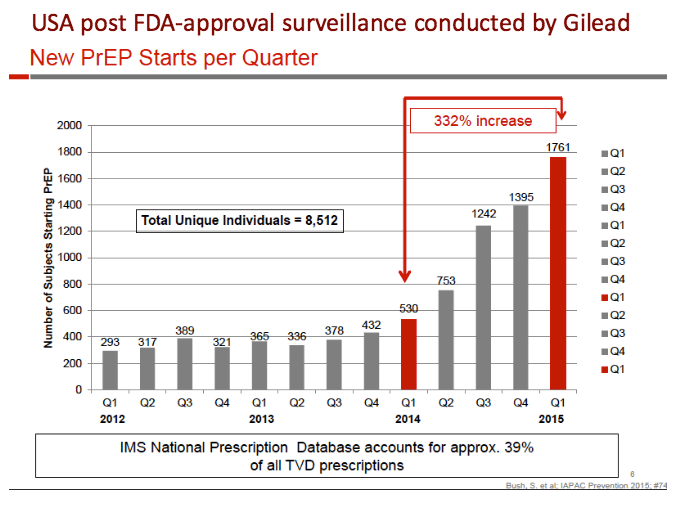

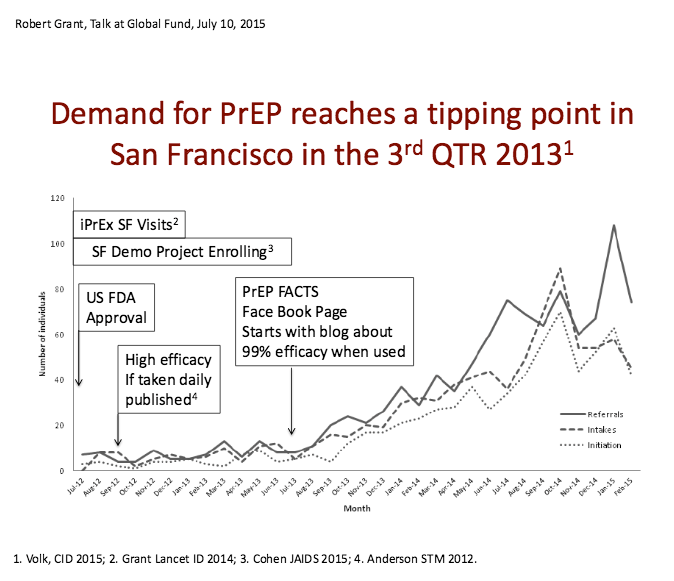
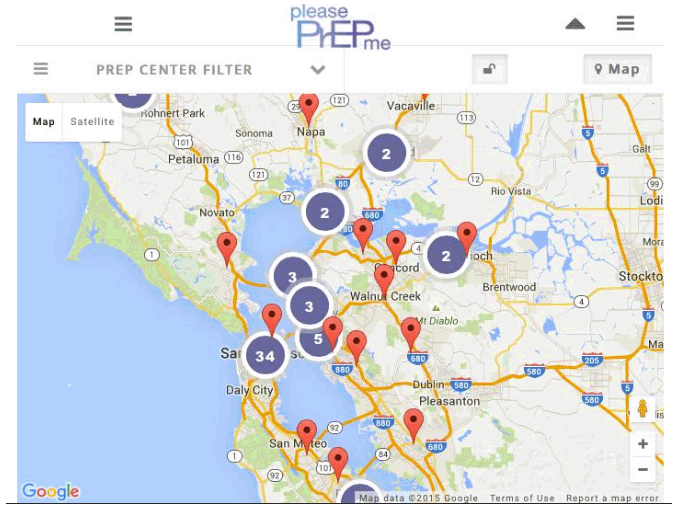
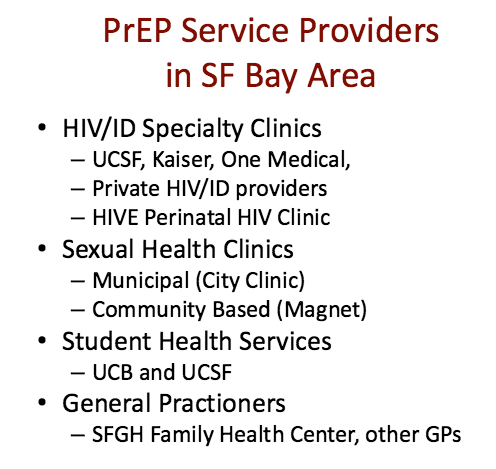
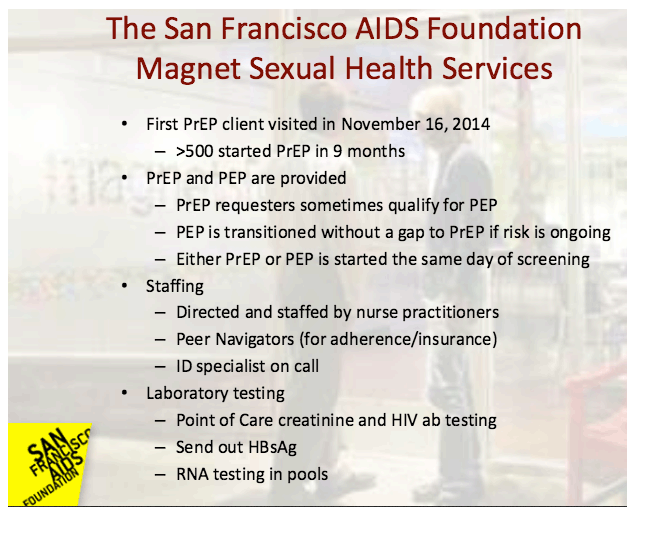
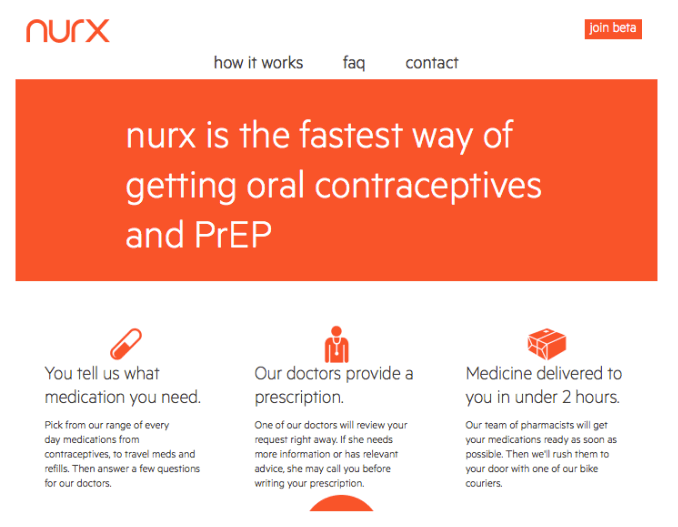
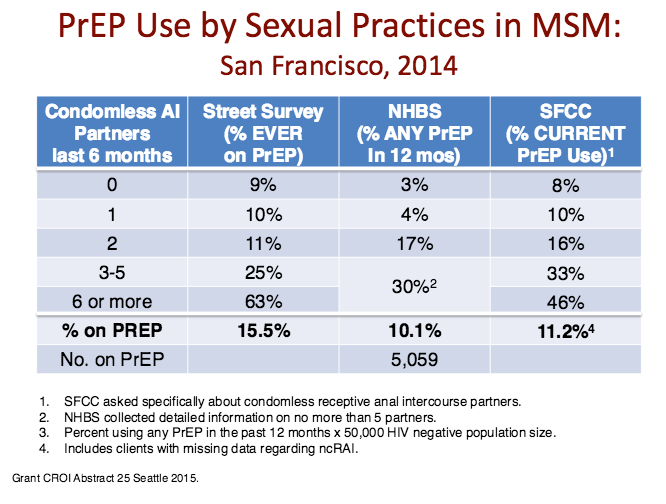
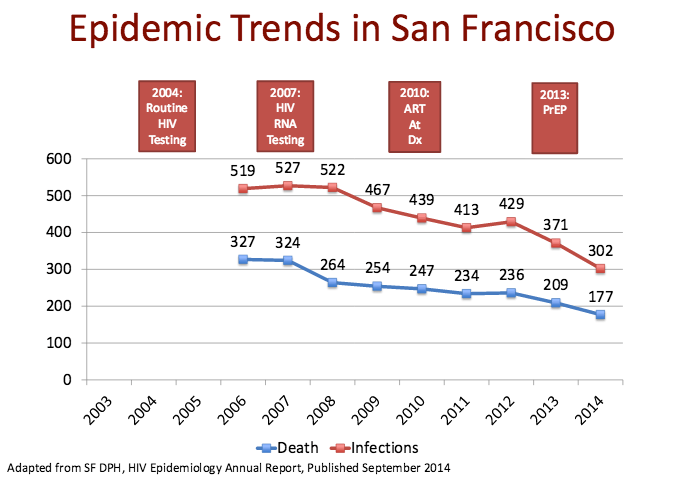
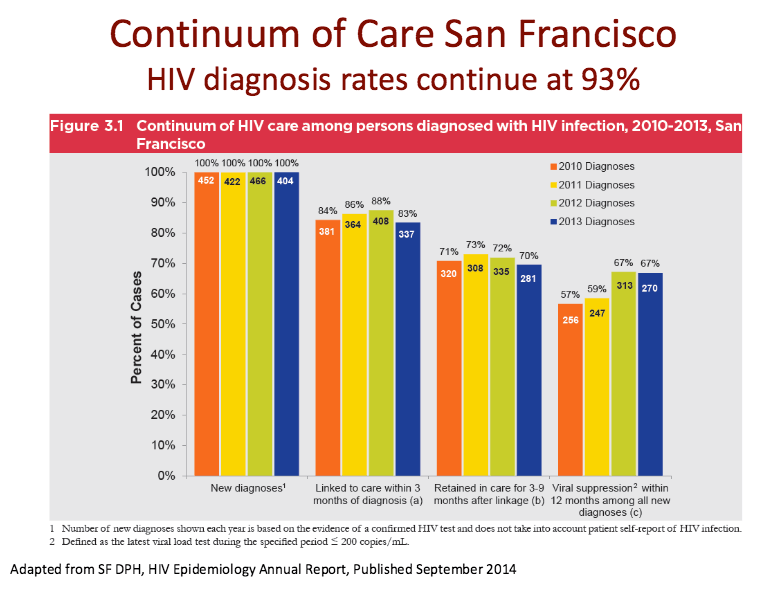
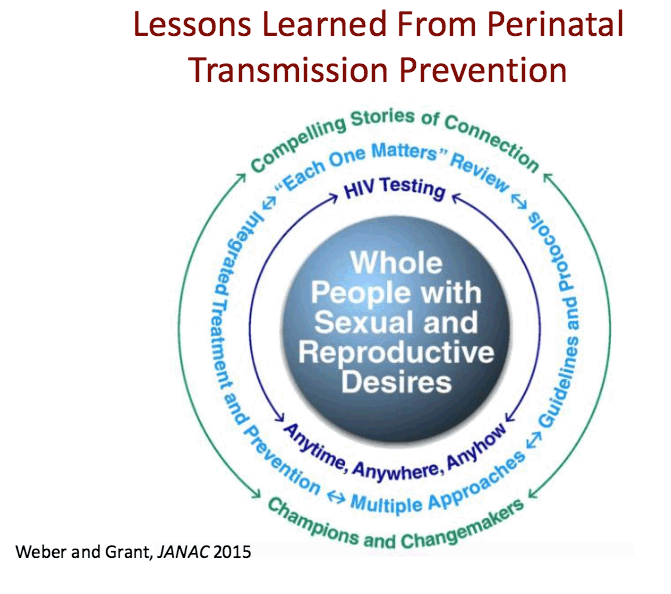
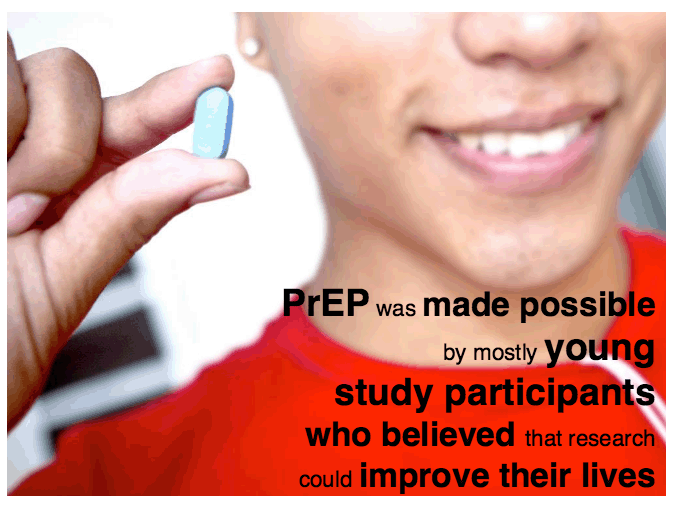
|
|
| |
| |
|
|
|